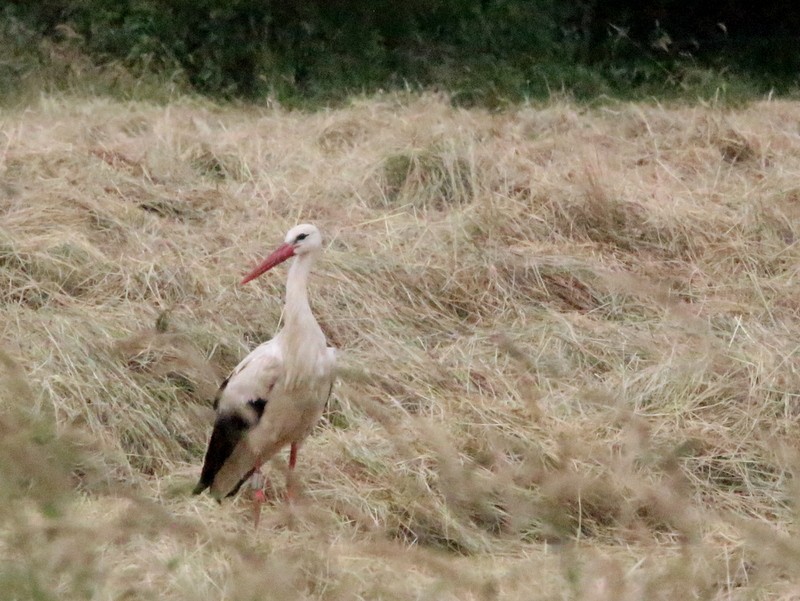 Where does white Stork usually live?
Where does white Stork usually live?
Where does white Stork usually live?
The nominate race of the white stork has a wide although disjunct summer range across Europe, clustered in the Iberian Peninsula and North Africa in the west, and much of eastern and central Europe, with 25% of the world's population concentrated in Poland, as well as parts of western Asia. The asiatica population of about 1450 birds is restricted to a region in central Asia between the Aral Sea and Xinjiang in western China. The Xinjiang population is believed to have become extinct around 1980. Migration routes extend the range of this species into many parts of Africa and India. Some populations adhere to the eastern migration route, which passes across Israel into eastern and central Africa. A few records of breeding from South Africa have been known since 1933 at Calitzdorp, and about 10 birds have been known to breed since the 1990s around Bredasdorp. A small population of white storks winters in India and is thought to derive principally from the C. c. asiatica population as flocks of up to 200 birds have been observed on spring migration in the early 1900s through the Kurram Valley. However, birds ringed in Germany have been recovered in western (Bikaner) and southern (Tirunelveli) India. An atypical specimen with red orbital skin, a feature of the Oriental white stork, has been recorded and further study of the Indian population is required. North of the breeding range, it is a passage migrant or vagrant in Finland, Iceland, Ireland, Norway and Sweden, and west to the Azores and Madeira. In recent years, the range has expanded into western Russia. The white stork's preferred feeding grounds are grassy meadows, farmland and shallow wetlands. It avoids areas overgrown with tall grass and shrubs. In the Chernobyl area of northern Ukraine, white stork populations declined after the 1986 nuclear accident there as farmland was succeeded by tall grass shrubs. In parts of Poland, poor natural foraging grounds have forced birds to seek food at rubbish dumps since 1999. White storks have also been reported foraging in rubbish dumps in the Middle East, North Africa and South Africa. The white stork breeds in greater numbers in areas with open grasslands, particularly grassy areas which are wet or periodically flooded, and less in areas with taller vegetation cover such as forest and shrubland. They make use of grasslands, wetlands, and farmland on the wintering grounds in Africa. White storks were probably aided by human activities during the Middle Ages as woodland was cleared and new pastures and farmland were created, and they were found across much of Europe, breeding as far north as Sweden. The population in Sweden is thought to have established in the 16th century after forests were cut down for agriculture. About 5000 pairs were estimated to breed in the 18th century which declined subsequently. The first accurate census in 1917 found 25 pairs and the last pair failed to breed around 1955. The white stork has been a rare visitor to the British Isles, with about 20 birds seen in Britain every year, and prior to 2020 there were no records of nesting since a pair nested atop St Giles High Kirk in Edinburgh, Scotland in 1416. In 2020, a pair bred in the United Kingdom for the first time in over 600 years, as part of an re-introduction initiative called the White Stork Project. A decline in population began in the 19th century due to industrialisation and changes in agricultural methods. White storks no longer nest in many countries, and the current strongholds of the western population are in Portugal, Spain, Ukraine and Poland. In the Iberian Peninsula, populations are concentrated in the southwest, and have also declined due to agricultural practices. A study published in 2005 found that the Podhale region in the uplands of southern Poland had seen an influx of white storks, which first bred there in 1931 and have nested at progressively higher altitudes since, reaching 890 m (3000 ft) in 1999. The authors proposed that this was related to climate warming and the influx of other animals and plants to higher altitudes. White storks arriving in Poznań province (Greater Poland Voivodeship) in western Poland in spring to breed did so some 10 days earlier in the last twenty years of the 20th century than at the end of the 19th century.
